Spaceport world. Part 1
To launch spacecraft into space, in addition to the launch pad, a complex of facilities is needed where pre-launch activities are carried out: the final assembly and docking of the carrier rocket and the spacecraft, pre-launch testing and diagnostics, refueling and oxidizer.
Usually, cosmodromes occupy a large area and are located at a considerable distance from densely populated places, in order to avoid damage in the event of accidents and falls, which are separated during the flight of stages.
The closer the launch point is to the equator, the less energy is required to put the payload into space. When launched from the equator, it can save about 10% of fuel compared to a rocket starting from a space center located in middle latitudes. Since there are not so many states at the equator capable of launching rockets into space, projects of sea-based cosmodromes have appeared.
Russia
The Russian Federation, being a pioneer in the field of space exploration, currently holds the first place in the number of launches. In 2012, our country carried out 24 launch vehicles, unfortunately not all successful.
Russia's largest "space harbor" is Baikonur cosmodrome leased from Kazakhstan. It is located on the territory of Kazakhstan, in the Kyzylorda region between the city of Kazalinsk and the village of Dzhusaly, near the village of Tyuratam. Spaceport space: 6717 km². The construction of the spaceport began in 1955 year. 21 August 1957, the first successful launch of the P-7 rocket took place.
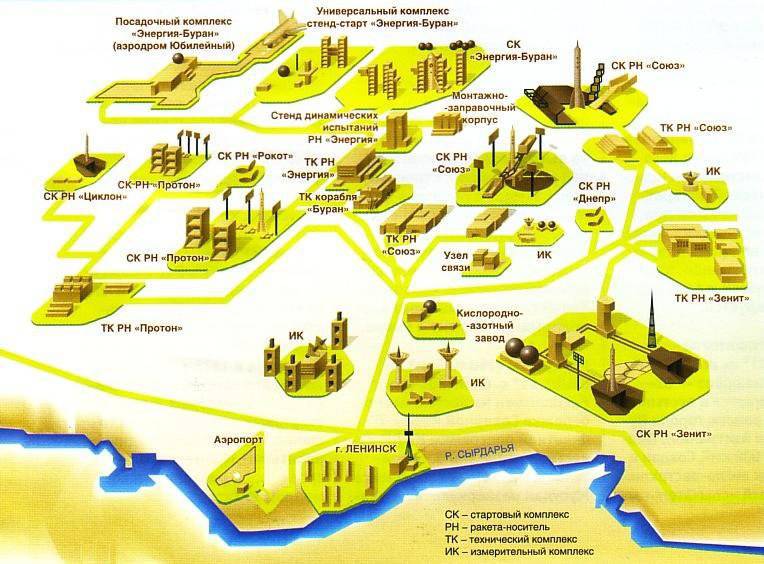
In Soviet times, in the Baikonur region, a huge, unparalleled world infrastructure was created, which includes, in addition to starting, preparatory and test complexes, aerodromes, access roads, office buildings and residential towns. All this after the collapse of the USSR went to independent Kazakhstan.
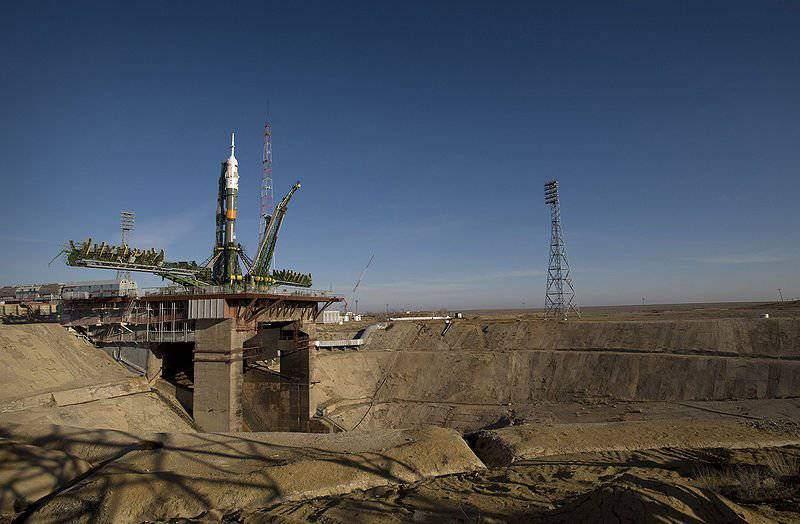
According to official data, the launch of the cosmodrome in 2012 cost about 5 billion rubles per year (the cost of renting the Baikonur complex amounts to 115 million dollars - about 3,5 billion rubles per year, and Russia spends about 1,5 billion rubles per year to maintain the cosmodrome facilities) That was 4,2% of the total Roscosmos budget for 2012 a year. In addition, from the federal budget of Russia to the budget of the city of Baikonur annually carried out free of charge in the amount of 1,16 billion rubles (as of 2012 year). In total, the cosmodrome and the city cost the Russian budget 6,16 billion rubles a year.
At the moment, Baikonur, after being transferred by the military in 2005, is under the jurisdiction of Roskosmos. By the end of 2007, most of the military space units had left the cosmodrome, only about 500 Russian military personnel remained at the cosmodrome.
The cosmodrome has infrastructure and launch facilities allowing launch vehicles to be launched:
- medium carriers of the “Soyuz” family, starting weight up to 313000 kg (based on Р-7) - grounds No. 1 (Gagarinsky start), No. 31.
- light carriers "Cosmos", launch weight up to 109000 kg - platform No. 41.
- medium carriers of the Zenit family, starting weight up to 462200kg - platform No. 45.
- heavy carriers “Proton”, starting weight up to 705 000kg - platforms № 81, № 200.
-easy carriers of the Cyclone family, starting weight up to 193 000kg (based on ICBM P-36) - platform No. 90.
- Dnepr light carriers, launch weight up to 211000kg (joint Russian-Ukrainian development based on ICBM P-36М) - playground № 175
“Rokot” and “Strela” light carriers, starting weight up to 107 500 kg (based on ICBM UR-100Н) - platform № 175.
-Energy heavy carriers, starting weight up to 2400 000kg (currently not used) - platforms No. 110, No. 250.
Despite regularly received payments for the lease of the spaceport and interstate agreements, Kazakhstan periodically interferes with the normal operation of the spaceport. So, in 2012, the launches of the European meteorological spacecraft MetOp-B (launch planned for 23 May), the Russian satellites Kanopus-V and the ICA-PN1, the Belarusian BSA, the Canadian ADS-1B and the German TET-1 (group launch of these five devices was scheduled for June 7), the Russian device Resurs-P (planned for August).
The reason was the long-term coordination by the Kazakh side of the use of the field of the fall of the first stage of launch vehicles in the Kustanai and Aktyubinsk regions (used when launching satellites into the sun-synchronous orbit using the Soyuz launch vehicle).
Due to the position of the Kazakh side, the project to create a joint Russian-Kazakhstan rocket-space complex Baiterek (based on the new Angara launch vehicle) was not implemented. Reach a compromise on the financing of the project failed. Russia will probably build a launch facility for the Angara at the new Vostochny cosmodrome.
The most northern cosmodrome of the world is the Plesetsk, also known as the 1 State Test Space Center. It is located in 180 kilometers south of Arkhangelsk near the Plesetskaya railway station of the Northern Railway. The spaceport occupies the territory of 176 200 hectares. His history the spaceport leads from 11 in January 1957, when the Decree of the Council of Ministers of the USSR on the creation of a military facility with the code name Angara was adopted. The cosmodrome was created as the first Soviet army missile compound armed with intercontinental ballistic missiles Р-7 and Р-7А.
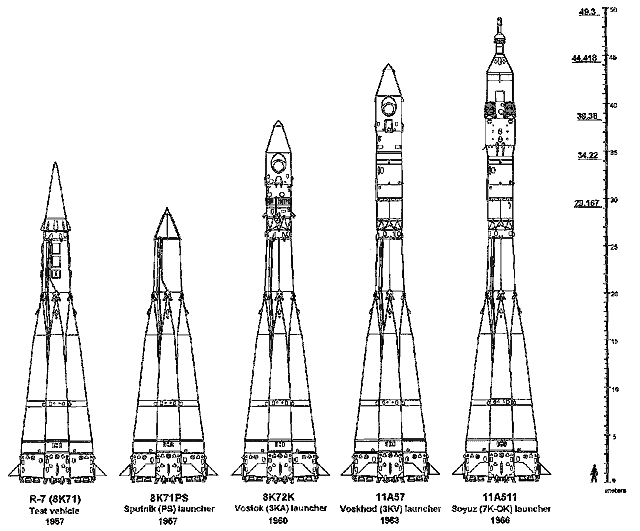
From 70-x to the start of 90-x, the Plesetsk cosmodrome held world leadership in the number of rocket launches (from 1957 to 1993, the 1372 launch took place from here, whereas from Baikonur at 2, only 917 was located).
However, with the 1990-ies, the annual number of launches from Plesetsk has become less than from Baikonur. The cosmodrome is under the jurisdiction of the military, in addition to launching the satellite from its orbit from time to time, test launches of ICBMs are made.
The spaceport has stationary technical and launch complexes of domestic light and middle class launch vehicles: Rokot, Cyclone-3, Cosmos-3М and Soyuz.
Also at the cosmodrome there is a test complex designed for testing intercontinental ballistic missiles with a silo-type PU.
The construction of launch and technical complexes for Angara launch vehicles on the basis of Zenit is under way.
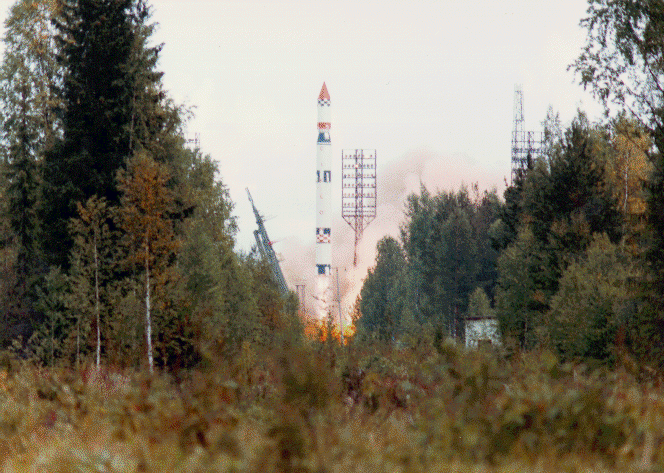
The spaceport provides a significant part of Russian space programs related to defense, as well as scientific and commercial launches of unmanned spacecraft.
In addition to the main Baikonur and Plesetsk cosmodromes, launching of carrier rockets and launching spacecraft into near-earth orbit is occasionally carried out from other cosmodromes.
The most famous of these is the Svobodny Cosmodrome. The main reason for the creation of this cosmodrome was the fact that, as a result of the collapse of the USSR, the Baikonur cosmodrome found itself outside the territory of Russia and the impossibility of launching heavy Protons from the Plesetsk cosmodrome. It was decided to create a new cosmodrome on the basis of the disbanded 27 of the Red Banner Far Eastern Division of the Strategic Missile Forces, which had previously been armed with the BR UR-100. In 1993, its objects were transferred to the military space forces. 1 March 1996, by presidential decree, the 2 th State Test Spaceport of the RF Ministry of Defense was established here. The total area of this object is about 700 km2.
The first launch of the launch 1.2 launch vehicle based on the Topol BR with the Zeya spacecraft took place on March 4 of the year 1997. For all the existence of the spaceport there were five launches of missiles.
In 1999, the decision was made to build a missile launch complex for the Strela launch vehicle at the cosmodrome. However, the Strela complex did not pass the state environmental review due to the high toxicity of the rocket fuel used in it - heptyl. In June, at the meeting of the Security Council of the Russian Federation, 2005, it was decided to reduce the armed forces, to eliminate the Svobodny space center due to the low intensity of launches and insufficient funding. However, already in 2007, it was decided to create an infrastructure here for launching middle-class launch vehicles. The future cosmodrome received a name - "Vostochny". It is assumed that there will be commercial and scientific launches, and all military launches are planned to be made from Plesetsk.
The launches of light launch vehicles of the Kosmos and Dnepr series were also carried out from the Kapustin Yar test site and the Yasny launch pad.
At the Kapustin Yar test site in the Astrakhan region, prospective air defense weapons are currently being tested. In addition, periodically launches of rockets of the Cosmos series with military satellites take place.
The Yasny complex is located on the territory of the Dombarovsky position region of the Strategic Missile Forces in the Yasnensky district of the Orenburg region of Russia. Used to launch spacecraft through Dnepr launch vehicles. From July 2006 to August 2013, six successful commercial launches were made.
Also in Russia, space launches were launched from strategic missile submarines.
7 July 1998 from the Novomoskovsk SSNS of the 667BDRM Dolphin project, while underwater, in the Barents Sea, two German commercial micro-satellite Tubsat-N were put into low near-earth orbit. This is the first in the history of space exploration to put satellites into near-earth orbit with the launch of a rocket from under water.
26 on May 2006 from the Yekaterinburg SSBN of the 667BDRM Dolphin project, the Compass 2 satellite was successfully launched.
USA
The most famous US spaceport is certainly the Fitzgerald Kennedy Space Center. It is located on the island of Merritt in Florida, the center of the cosmodrome is located near Cape Canaveral, midway between Miami and Jacksonville. The Kennedy Space Center is a complex of facilities for launching spacecraft and flight control (cosmodrome), owned by NASA. The size of the cosmodrome is 55 km long and about 10 km wide, the area is 567 km².
The spaceport was originally founded in 1950 year as a testing ground for missiles. The location of the landfill was one of the most convenient in the United States, since the spent rocket stages fall into the Atlantic Ocean. However, the location of the cosmodrome is associated with significant natural and meteorological risks. The buildings and facilities of the space center were repeatedly seriously damaged by hurricanes, and planned launches had to be postponed. So in September 2004, part of the Kennedy Space Center facilities were damaged by Hurricane Francis. A vertical building has lost a thousand external panels of approximate dimensions 1,2 × 3.0 m each. The outer skin of the 3700 m² area was destroyed. The roof was partially torn down and the interior was extensively damaged by water.
All shuttle launches Kennedy Space Center produced from the launch complex number 39. The center is served by approximately 15 thousand civil servants and specialists.
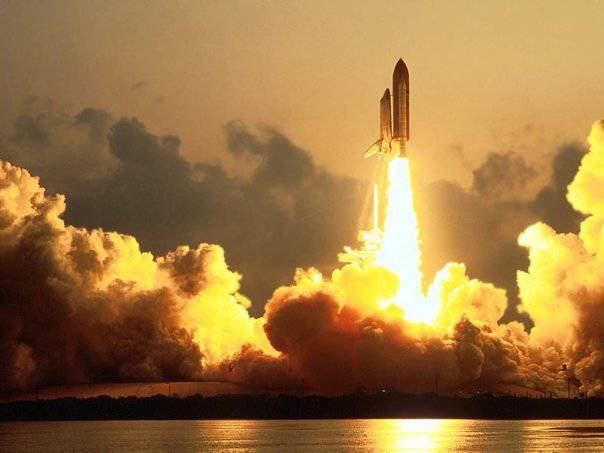
The history of this cosmodrome is inextricably linked with the US manned space exploration program. Until July 2011, the Kennedy Space Center was the site for launching Space Shuttle ships using the 39 suite with the Apollo infrastructure. The first launch was the ship Columbia 12 on April 1981. The center is also a place for landing the orbital shuttles - there is a landing strip with a length of 4,6 km.
The last launch of the space shuttle "Atlantis", took place 16 May 2011 of the year. Then the American reusable ship delivered a cargo of logistics and an alpha magnetic spectrometer to the international space station.
Part of the territory of the cosmodrome is open to the public, there are several museums and cinemas and exhibition grounds. On the territory closed to free visits organized bus excursion routes. The cost of the bus tour - 38 dollars. It includes: a visit to the launch sites of the complex number 39 and a trip to the center "Apollon-Saturn V", an overview of the tracking stations.
The Apollo-Saturn V Center is a huge museum, built around the most valuable exhibits at the exhibition - the reconstructed Saturn V starter and other space-related exhibits, such as the Apollo capsule.
Unmanned spacecraft launches are carried out from launch sites located along the coast, they are operated by the US Air Force and are part of the US Air Force base at Cape Canaveral. This base is part of the US Air Force Space Command. At Cape Canaveral, 38 launch sites are located, of which only 4 are currently operational. Currently, the Delta II and IV, Falcon 9 and Atlas V rocket launches from the spaceport
From here 22 April 2010, the first successful launch of an unmanned spacecraft Boeing X-37. It was launched into Earth orbit using the Atlas V rocket.
5 March 2011, the device was launched into orbit by an Atlas V launch vehicle launched from Cape Canaveral. According to statements by the US Air Force, with the help of the second X-37B, sensory instruments and satellite systems will be developed. 16 June 2012, the aircraft landed on the basis of the American Air Force Vandenberg in California, spending 468 days and 13 hours in orbit, circled around the Earth more than seven thousand times.
11 December 2012, the apparatus of this type was launched into space for the third time, where it is, to this day.
X-37- designed for operation at altitudes from 200 — 750 km, able to quickly change orbits, maneuver, can perform reconnaissance tasks, deliver and return small loads.
The second largest and most important object of US space infrastructure is the Vandenberg Military Air Base. Here is a joint space command center. This is the residence of the 14 air regiment, the 30 space wing, the 381 training team and the Western launch and test ground, which launches satellites for military and commercial organizations, as well as tests of intercontinental ballistic missiles, including 3.
Control and training firing missiles, conducted mainly in the south-western direction to the atolls Kwajalein and Canton. The total length of the equipped route reaches 10 thousand. Km. Missiles are launched southward. Due to the geographical location of the base, the entire route of their flight passes over deserted areas of the Pacific Ocean.
16 December 1958 from the Vandenberg base launched the first Thor ballistic missile. February 28 From Vandenberg, 1959 launched the world's first polar-orbiting satellite Discoverer-1 on the Tor-Agen carrier rocket. Vandenberg was chosen to launch and land landing space shuttles on the west coast of the United States.
To launch the shuttles, technical facilities were built, the assembly building and the launch complex No. XXUMX were rebuilt. In addition to this, the runway at the base of 6 meters in length was extended to 2590 meters in order to facilitate the landing of the shuttles. Full maintenance and restoration of the orbiter was carried out on the equipment located here. However, the explosion of the Challenger resulted in the cancellation of all shuttle flights from the West Coast.
After freezing the shuttle program at Vandenberg, the launch complex No. XXUMX was once again remade to launch the launch vehicles Delta IV. The first of the space vehicles of the Delta IV series, launched from the site №6, was a rocket launched by 6 on June 27 of the year, it launched the reconnaissance satellite NROL-2006 into orbit.
Currently, the facilities of the Vandenberg base are used to launch military satellites, some of them, for example, the NROL-28 spacecraft, are used for the “fight against terrorism”. NROL-28 was launched into a highly elliptical orbit to gather intelligence on terrorist groups in the Middle East; for example, sensors onboard such satellites can track the movement of military vehicles over the surface of the earth. This satellite was put into space by the Atlas V carrier, which used Russian RD-180 engines.
For tests under the missile defense program is used - Reagan test range. Launch sites are located on Kwajälin Atoll and Wake Island. It has existed since 1959. In 1999, the test site is named after former US president Ronald Reagan.
Since 2004, on the island of Omelek, which is part of the landfill, is the launching pad for the carrier rocket Falcon 1, created by SpaceX. A total of 4 orbital launch attempts were made from the island of Omelek.
The first three failed, the fourth rocket launched a mass-dimensional satellite mock-up into orbit. The first commercial launch occurred on July 13 2009. The delay was caused by problems of compatibility of the rocket and the Malaysian satellite RazakSat.
The Falcon 1 lightweight booster is partially reusable, the first stage is split down after separation and can be reused.
The Wallops Cosmodrome is located on the territory of NASA and consists of three separate sections with a total area of 25 km²: the main base, the center on the mainland, and the Wallops Island, where the launch facility is located. The main base is located on the east coast of Virginia. It was founded in 1945 year, the first successful launch was made on 16 in February 1961, when the research satellite "Explorer-1" was launched into near-earth orbit with the help of the Scout X-9 booster rocket. It has several launch complexes.
In 1986, NASA deployed an on-site monitoring and control system for tracking and controlling the flight of the spacecraft. Several radars with antenna diameter 2,4 — 26 m provide reception and high-speed transmission of information from objects directly to their owners. The technical capabilities of the complex allow trajectory measurements of objects located at a distance of 60 thousand km, with an accuracy of 3 m in range and up to 9 cm / s in speed.
Over the years of its existence, more than 15 thousand rocket launches of various types have been made from the territory of the station, recently around 30 starts per year.
Since 2006, a portion of the landfill has been leased by a private aerospace corporation and used for commercial launches called the "Mid-Atlantic Regional Spaceport." In 2013, the Lunar Atmosphere and Dust Environment Explorer probe was launched to the Moon by the Minotaur-V launch vehicle to the Moon from the Wallops launch site.
Also here, the Antares launch vehicle launches in its first stage two oxygen-kerosene AJ-26 rocket engines — developed by Aerojet and a US-licensed modification of the NK-33 engine for use on American launch vehicles.
As of 31 March 2010, Aerojet Rocketdine was purchased from SNTK. Kuznetsova about 40 engines NK-33 at the price of 1 million. US dollars.
The Kodiak launch complex, located on the eponymous island off the coast of Alaska, became another commercial spaceport. It is designed to launch light rockets along a suborbital trajectory and launch small spacecraft into a polar orbit.
The first experimental launch of the rocket from the launch site took place on November 5 1998 of the year. The first orbital launch took place on 29 on September 2001, when the Athena-1 launch vehicle launched a small satellite into 4 orbit.
Despite the “commercial” designation of the cosmodrome, it regularly launches Minotaur launch vehicles. The Minotaur family of American fully solid-propellant launch vehicles was developed by Orbital Scientific Corporation by order of the United States Air Force based on the march steps of the Minuteman and Pikeper ICBMs.
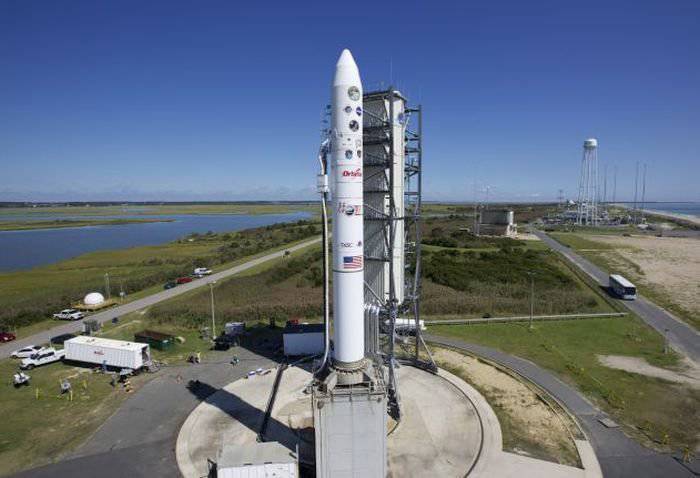
According to US laws prohibiting the sale of government equipment, the Minotaur launch vehicle can only be used for government satellite launches and is not available for commercial orders. The extreme successful launch of the Minotaur V took place on 6 September 2013 of the year.
In addition to launching cargo into space with the help of launch vehicles, other programs are being implemented in the United States. In particular, objects were launched into orbit using Pegasus missiles launched from the Stargeizer aircraft - a modified Lockheed L-1011.
The system was developed by Orbital Sciences Corporation, which specializes in providing commercial services for the delivery of objects into space.
Another example of a private initiative is developed by Scaled Composites LLC, the reusable Space Ship One.
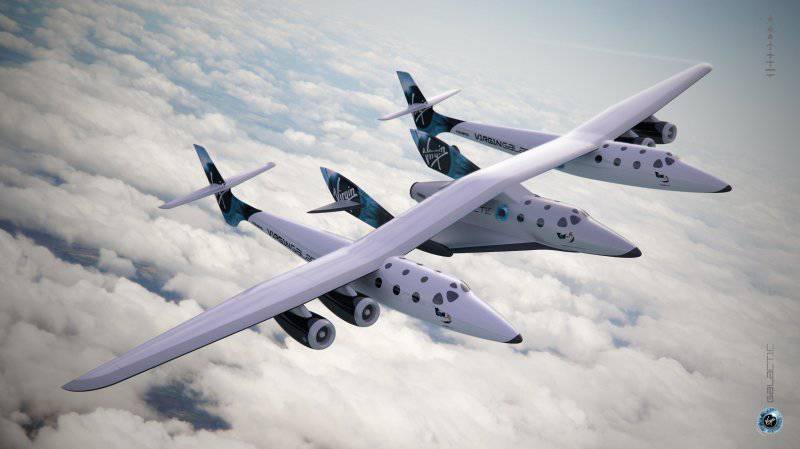
Take off by using a special aircraft White Knight (White Knight). Then, undoing occurs and Space Ship One rises to an altitude of about 50 km. In space, Space Ship One is about three minutes. The flights are carried out from the private aerospace center "Mojave" in the interests of "space tourism".
In 2012, 13 launch vehicles were launched in the USA. Yielding to this indicator, Russia in the United States is actively working to create promising launch vehicles and reusable spacecraft.
Based on:
http://geimint.blogspot.ru/2007/07/fire-from-space.html
http://ru.wikipedia.org/wiki/Космодром
http://georg071941.ru/kosmodromyi-ssha
http://www.walkinspace.ru/blog/2010-12-22-588
All satellite images courtesy of Google Earth.
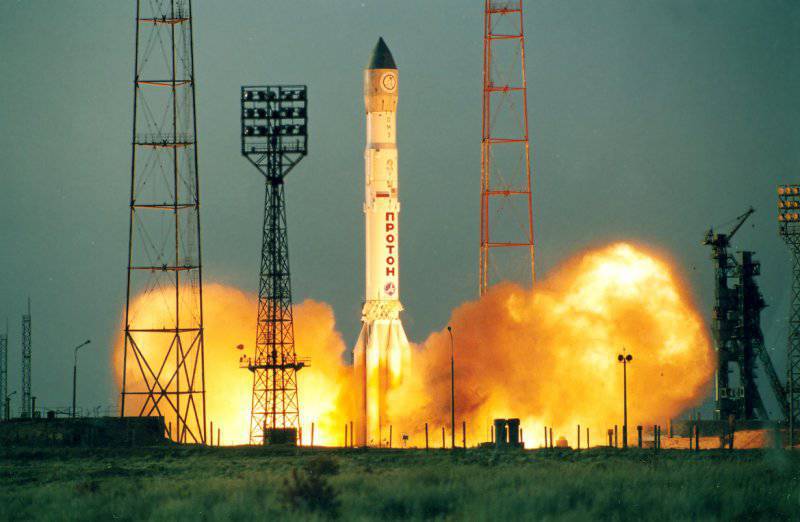
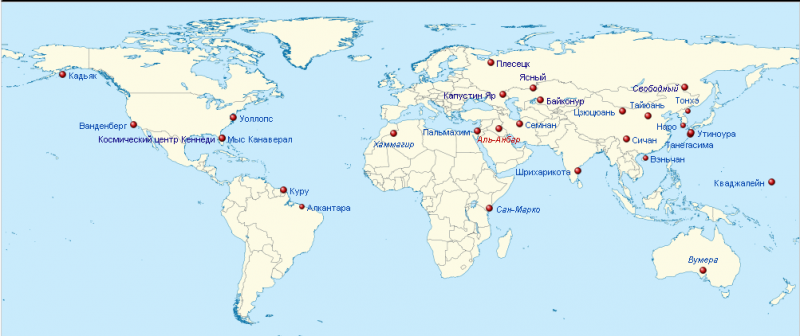

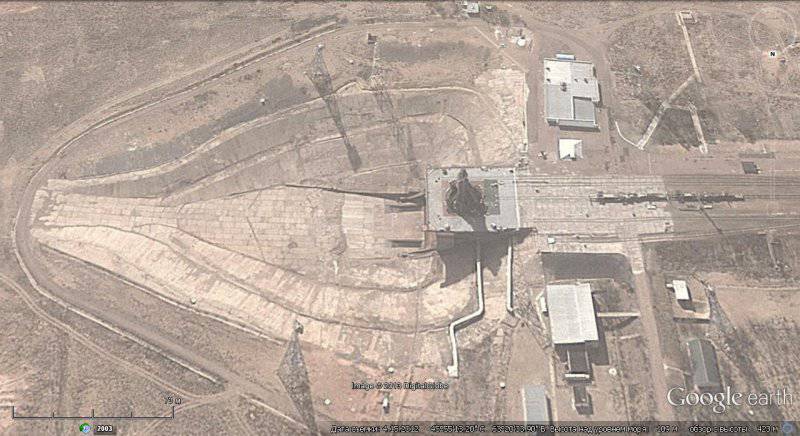
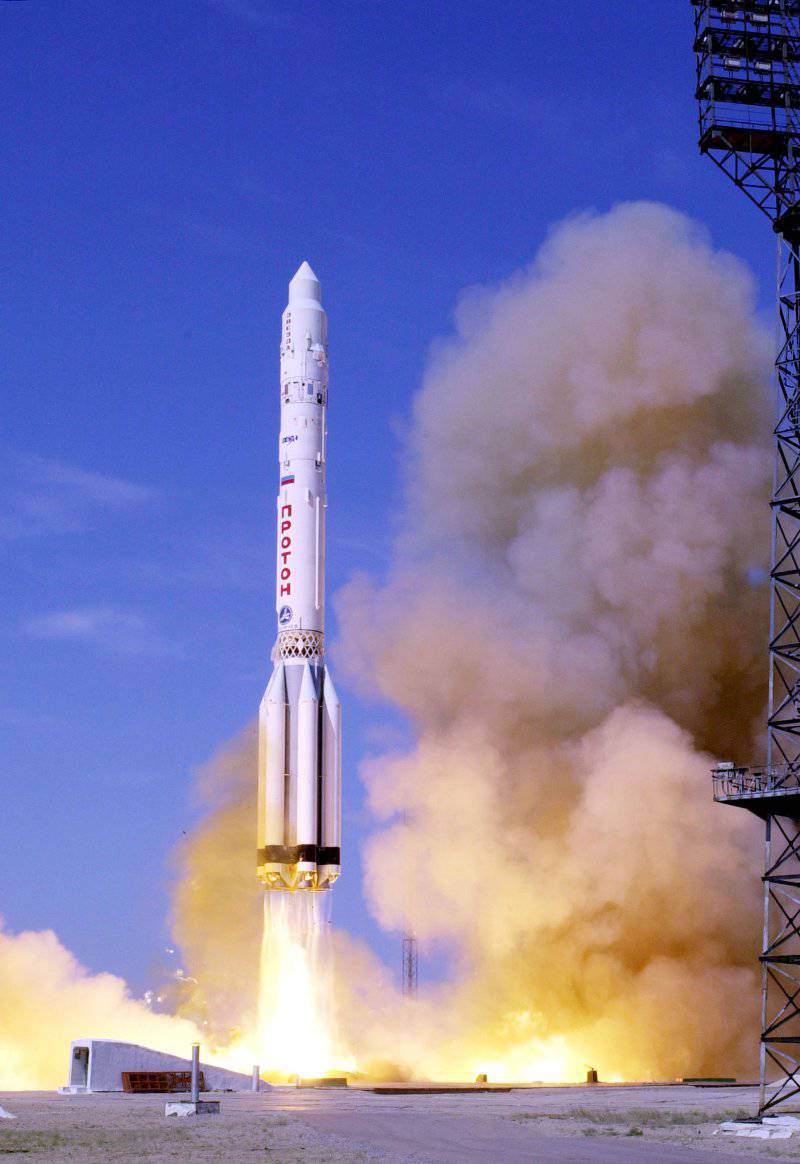
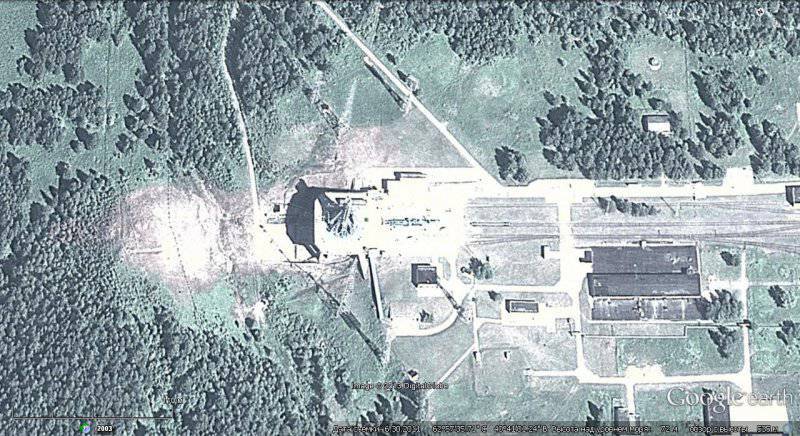
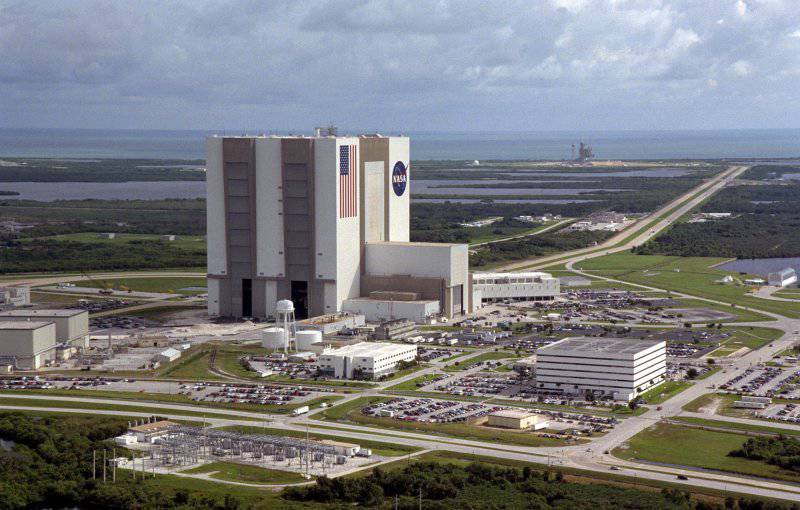
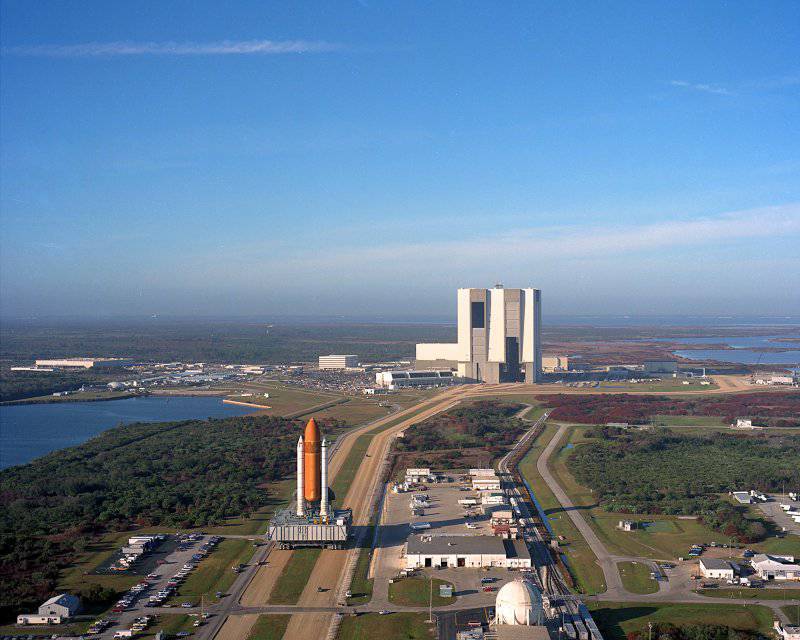
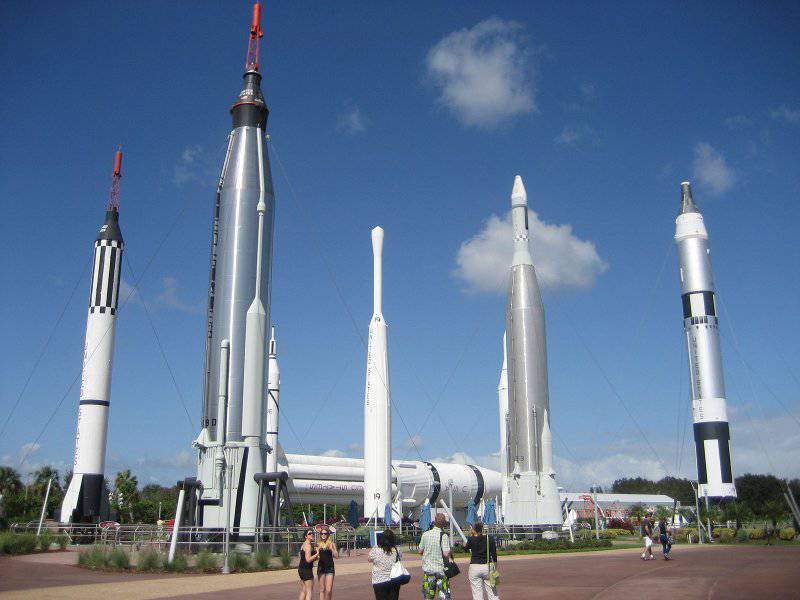
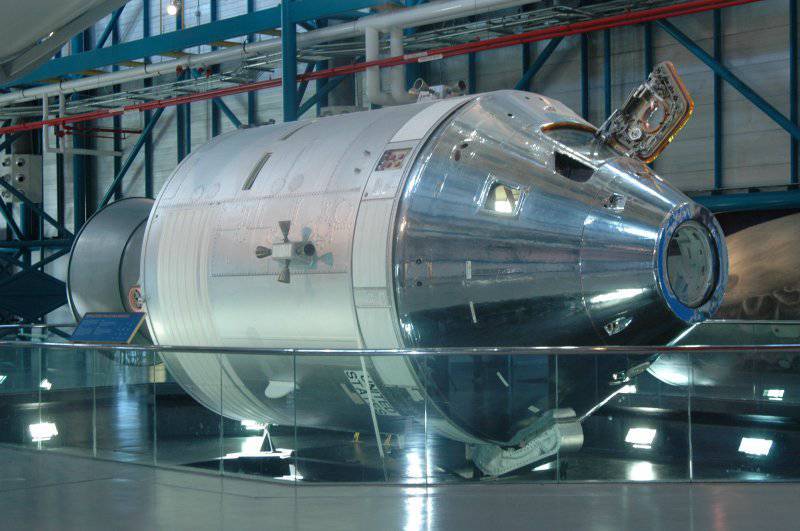
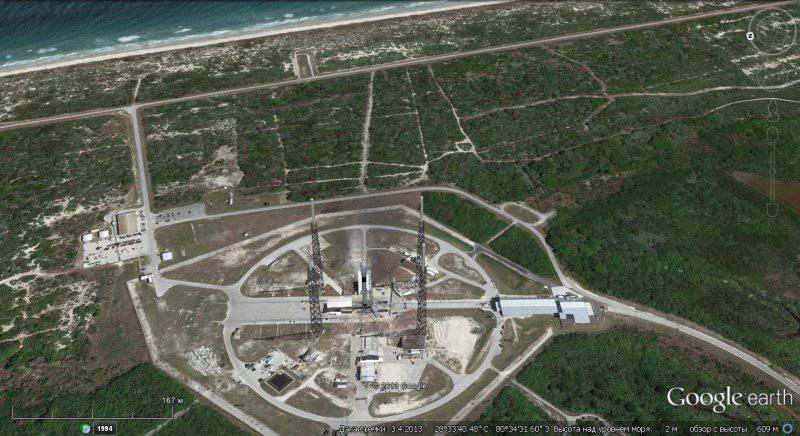

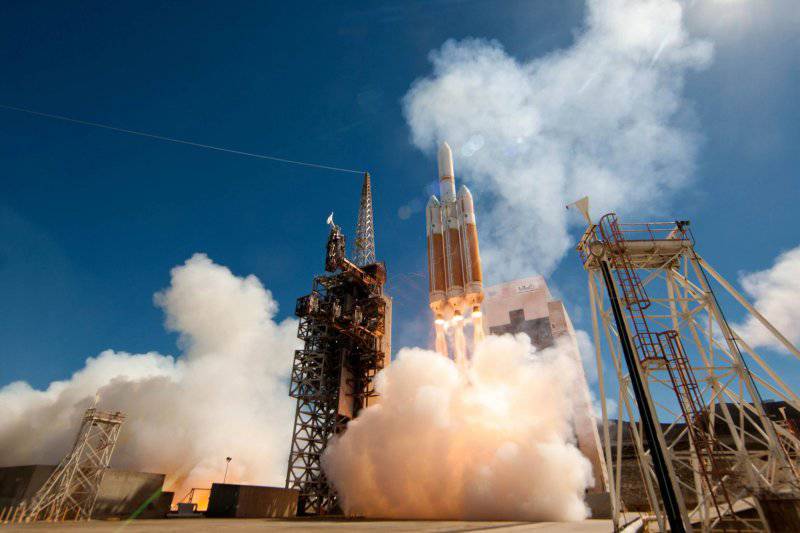
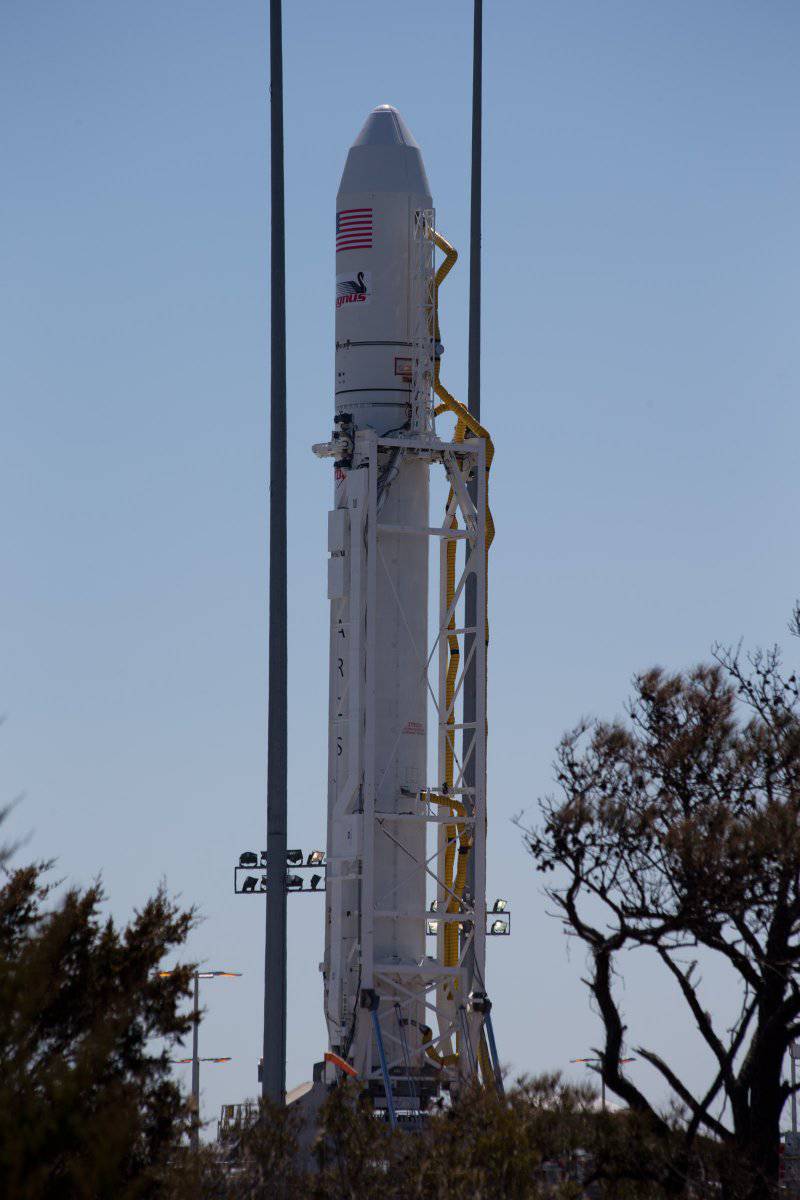
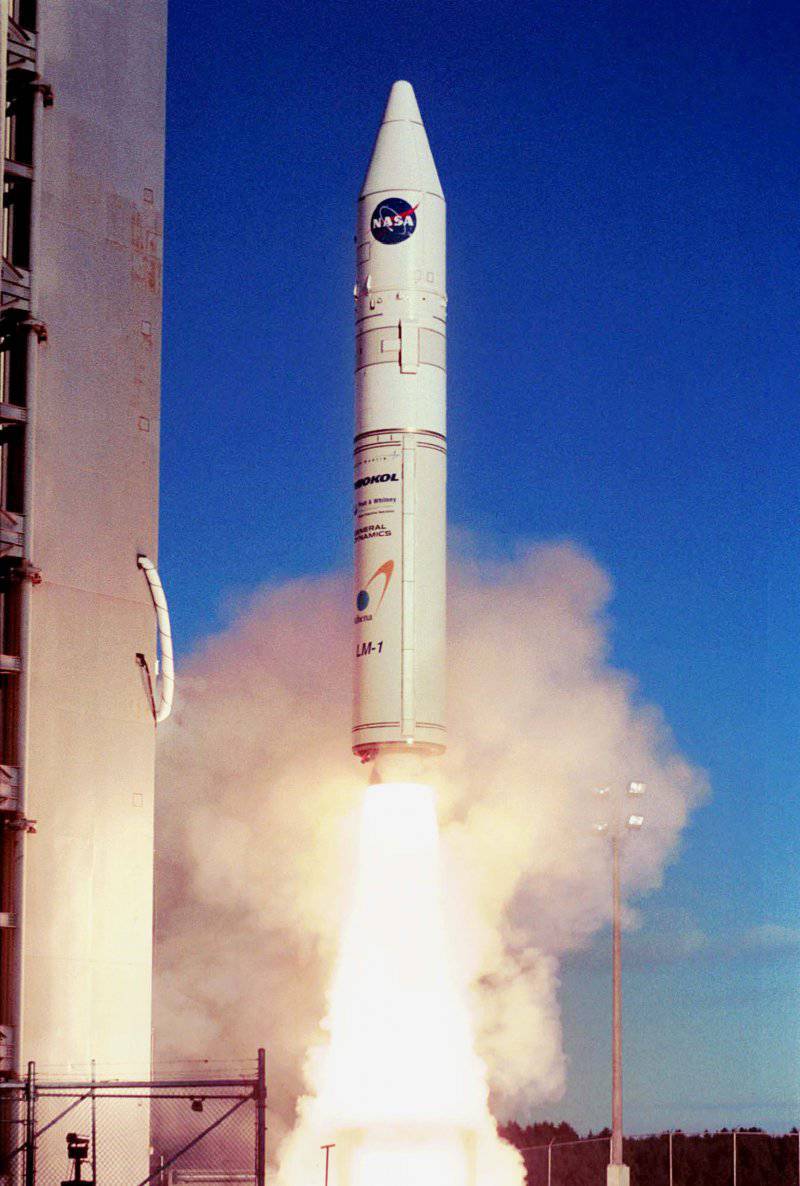

Information